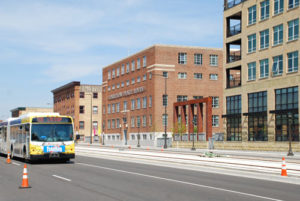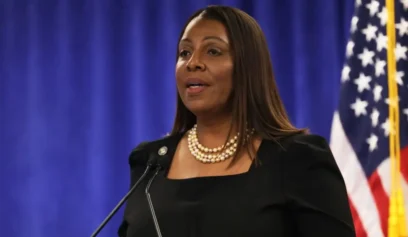
Courtesy Metropolitan Council.
Saint Paul and Minneapolis are home to uniquely segregated housing projects.
Private developers in the Twin Cities are taking advantage of low-income housing tax credits and city loans intended for the state’s most disadvantaged, according to a recent report.
The University of Minnesota’s Institute on Metropolitan Opportunity has found that local investors are targeting the starving-artist crowd — young, mainly white and broke, but not really — for subsidized housing units, creating pockets of white districts in racially integrated urban areas.
By choosing aging historic buildings for developments, real estate firms gain access to federal affordable housing tax credits, historic tax credits, and a host of other public incentives.
One Minneapolis-based developer is responsible for four historic transformations that researchers estimate together cost more than $460 million, almost exclusively in taxpayer dollars.
“Carleton Place Lofts ($430,000 per unit), the Schmidt Artist Lofts ($470,000 per unit), the upcoming Fort Snelling housing conversion ($525,000 per unit), and the A-Mill Artist lofts ($665,000 per unit),” the report said. “For reference, this is significantly more than the public contribution to most of the region’s sports stadiums; it is $40 million less than the public contribution to the controversial downtown football stadium.”
This new brand of “affordable” housing features rooftop clubrooms, underground parking, full kitchens with dishwashers, yoga and exercise studios, and free wi-fi. Separate spaces for painting, pottery, photography, dance, music and performances provide all the comforts for aspiring creators. But the typical low-income demographic, abjectly poor and overwhelmingly African American, would be hard-pressed to bear the expense.
The occupants of these sites, called “artist lofts,” are 82.4 percent white, with an average income of $29,890. The units are priced high enough that severely impoverished families, the elderly and disabled cannot afford them, yet low enough for the artist on a budget. Some projects subject potential tenants to a rigorous screening process, requiring applicants to submit portfolios as proof of a commitment to artistic endeavors, according to the report.
The study’s authors say the discriminatory practice perpetuates racial and ethnic segregation in a region that is already home to the country’s widest racial gaps in poverty, homeownership, employment and educational attainment. Minneapolis and Saint Paul are ranked No. 4 for racial disparities in per capita income in the U.S.
“There’s a dual system of subsidized housing in Minneapolis and perhaps other cities,” study author Myron Orfield said in a feature for The Atlantic. “There’s the traditional form of subsidized housing, heavily concentrated in minority neighborhoods and heavily occupied by poor, non-white voucher holders. And then you have another system of affordable housing — artist housing in white neighborhoods that’s predominantly occupied by non-poor, white artists.”
They warn policymakers that confining majority Black residents to more traditional housing projects, which have very few opportunities for career or educational advancement, harms the economic development of the city as a whole.
Authors coined the term POSH or “Politically Opportune Subsidized Housing,” for the phenomenon and say it’s attractive to politicians, cities and communities because it promotes safe causes like historic restorations and support for underpaid but highly regarded professions. But the population in dire need of tax-subsidized housing loses out as more and more of the funding designed for their benefit goes to a “favored class of residents.”
“Instead of helping the struggling urban poor escape poverty and segregation, the region’s most celebrated housing projects instead appear aimed at helping white, moderate-income “creatives” live comfortably in Minneapolis and Saint Paul’s most exclusive urban quarters.”


